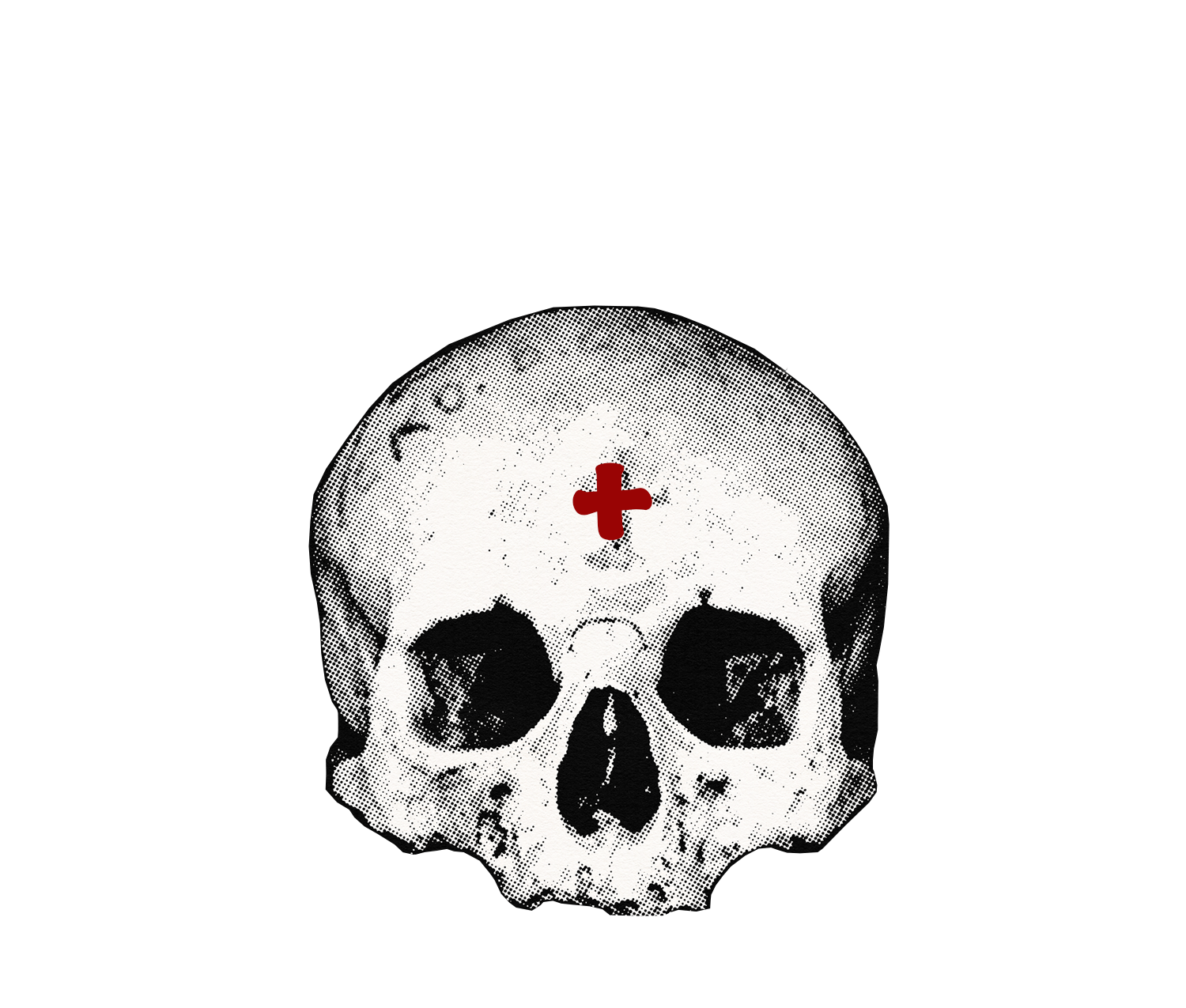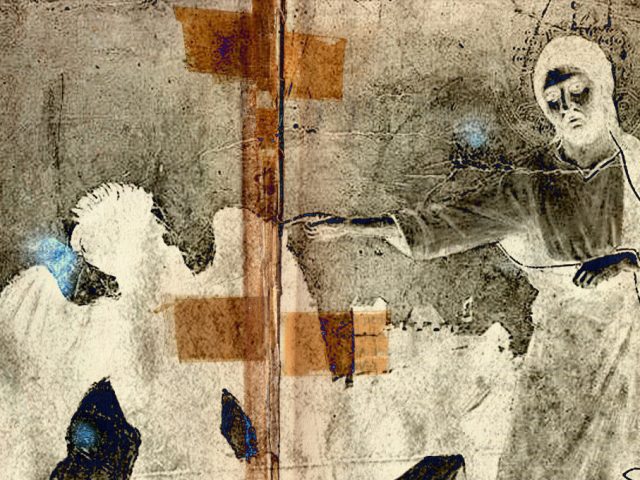By Subdeacon Joseph Magnus Frangipani
I’m reminded of pilgrims at the Himalayan foothills seeking passage around the icy mouth of the Ganges River. Among these hikers were two very different men, one an intelligent geologist and the other a simple backpacker.
The geologist put every trust in his mind.
As he told others, “I know all there is about the composition of mountains and valleys. I know how they’re formed and why they’re here. Look, I understand everything and really don’t need backcountry camping lessons, nor do I have time to get in shape for this journey.”
So, he left unprepared, but very confident for the hard journey ahead.
Meanwhile, the simple backpacker didn’t count on his intelligence alone. Rather, he worked out every day, getting his body into good health, also while getting to know the locals who passed through these mountains. He learned where to find shelter, what places and people to avoid, and knew precisely where he was going. He was very humble about this undertaking.
At the first snowstorm the first man panicked. He forgot all about geology and his journey grew difficult and painful. The simpler man, however, brought to mind what he learned from those before him, drawing on ancient wisdom and, remembering his maps, actually wound around these mountains with much effort but safely.
One man arrived from his journey to new land.
The proud man was never found.
The secret closet, man’s heart, is the starting place where we embark on this journey. It is concealed by many thorns and bushes, within the folds of our passions, thoughts and ego. Our life, then, may seem a Russian nesting doll. When Christ comes like a gardener, we may not recognize Him. Sometimes it is only when we don’t experience Him, though, that like the Prodigal Son we remember His bread and turn to face Him, which is what repentance is all about.
When we taste life apart from Him, which is not truly life but pigs and husks, we experience a foretaste of hell. This often has profound effects upon a person. One may experience a fear of God, depending of course to the degree they are oriented toward the spiritual life, and this fear encourages us to depend on His will, on His love and grace, developing humility so that entrust our minds and hearts once more to the Holy Trinity. Each time we reorient ourselves, we experience a minor death, where we can rightfully say with St. Paul, that I die daily, and that to die is to gain, for when the hour of death comes to us, we will not die, but live eternally within the Lord.
So it is perhaps helpful here to remember our soul as depicted in Church iconography, if you remember, in iconography, the soul is often portrayed as a swaddled infant held in the arms of our Father in Christ. In this way, we remember our dependence upon God and cling to our Father, leaping into His arms and carried away by His love.
In these ways, we continue uniting ourselves to Christ.
________
Now, during the service of Baptism and Chrismation, we see our union with Christ expressed in no uncertain terms. For instance, after renouncing and spitting on Satan, we announce three times we’ve united ourselves to Christ. It is Orthodox baptism – and Orthodox baptism alone – which begins to fulfill the saving work of our Lord in the human person. Here, we begin restoration of the true self and recovery from a state of corruption – perhaps, we might say the ’embryo’ sparks to life.
Contrast all this against the phenomenon coined as yoga.
Whereas in the Orthodox Church we’re called to and affirm ongoing union with Christ, yoga – which means ‘yoke,’ to bind or harness yourself to something, to establish an intricate union with – is explicitly union with someone or something other than Christ.
In learned and devoted practitioner of yoga understands techniques often involve incantations to Hindu deities, physical postures named after and dedicated to Hindu gods and goddesses, and the awakening of Kundalini Shakti – a created energy represented by a coiled serpent dormant in the spine. The creator of yoga, according to yoga, is Shiva the god of destruction.
Nevertheless, in America yoga is likened to stretching but yoga is not stretching. Yoga is a physical, mental and spiritual discipline rooted in Vedic philosophy and Hindu religion. It provides tools to unlock, or rather unblock, mysterious energies very foreign to the Orthodox Christian. Stretching is merely the physical relaxation of a muscle and little, or nothing else.
In yoga, many poses have names of gods and goddesses. For example, the pose called Viranchyasana – after the Hindu deity Viranchya – is dedicated to Brahma. Vishnua is a popular god mentioned in the Vedas and there are several poses dedicated to his avatars, to his human and animal incarnations. Then there’s Ananta, a god who even took the form of a snake, and we have the Anantasana pose named after him. The snake then reincarnated into a human, into Patanjali, author of the yogic bible, the Yogic Sutras of Pantanjali.
__________
Many yogic body positions also directly correspond to chakras. A chakra is what we might refer to as an invisible, spiritual pressure point. In the same way we might rub a pressure point on the physical body increasing blood or lymphatic flow, yoga contends we have a subtle body, too. Yogic postures sort of massages these points, encouraging particular channels to open up thereby attracting ‘spiritual energy.’
A lot of yogis talk about how the universe, and everything within it, is in fact musical, vibratory, and relates to frequency. For example, saying a mantra gets you in touch with some beings, a guru, a god or goddess, on one frequency, in one dimension. Putting yourself into a particular asana will also put out a vibration, a calling card, attracting energy – various subtle energies, – the way we might put a light in the window attracting someone’s attention. It doesn’t matter whether we realize this or not, believe it or not, the reality is the soul and body are intricately linked.
Yogic poses, rooted in the Hindu pantheon of gods and goddess, with names of gods and goddesses, working on subtle areas of your body and mind, are dangerous. You know, perhaps we can look at yogic poses as a sort of combination to a lock. Each asana or pattern of asanas, certainly over time, are supposed may unlock various energies.
Now this is very important: in the vast world of yoga, we find many methods of ‘picking’ these locks, many back doors corresponding to varieties of hidden powers. These powers influence ourselves and others, and are known even in yoga as white magic and black magic. I was personally initiated into these arts, in the Yoga Capital of the World.
One goal within this discipline of yoga is unlocking these chakras, these gates, within the body and soul, inviting energy to climb within you. This energy is often depicted and described as a coiled snake, known as Shakti, or kundalini, and the purpose here as most everywhere in yoga is to raise this energy into the mind so we attain the realization we are identical tGod.
So what are we yoking ourselves to during yoga?
Asanas, and really all signs and patterns within yoga – especially mantras – are false lights, like those of deep sea angler fish. This reminds me. In a yoga class, it’s not unusual to hear Sanskrit mantras and sometimes be invited by instructors to chant them, especially in the beginning and at the end of the session. These mantras might not be spoken by you, but rather to you, played through music played in the background, or depicted on clothing and on temple, ashram and yoga studio walls.
Just as the sign of the Cross corresponds to the Giver of Life, Jesus Christ, signs prevalent throughout yoga correspond to the influence of Shiva, Lord of Death. These signs and patterns include diagrams and amulets supposedly possessing occult powers in astrological and magical forms, and are known as mantras, mandalas, and yantras.
As Orthodox Christians, we should never attend schools grounded in satanic philosophy. We certainly shouldn’t twist our bodies and minds into postures dedicated to satan, even if we don’t worship him. The devil himself appears as an angel of light.
Like moths, we are often attracted to false, created lights. When Christ comes like a gardener, will we recognize Him? There is only one pattern of life, one Uncreated Map for mankind, Who is the Truth, the Way, and the Life. He is the Incarnate Logos, the Christ the God-Man.
Other Articles by Subdeacon Joseph:
The Impossibility of Aloneness: When Christ Found Me in the Himalayas Hidden Fire: Orthodox Perspectives on Yoga


